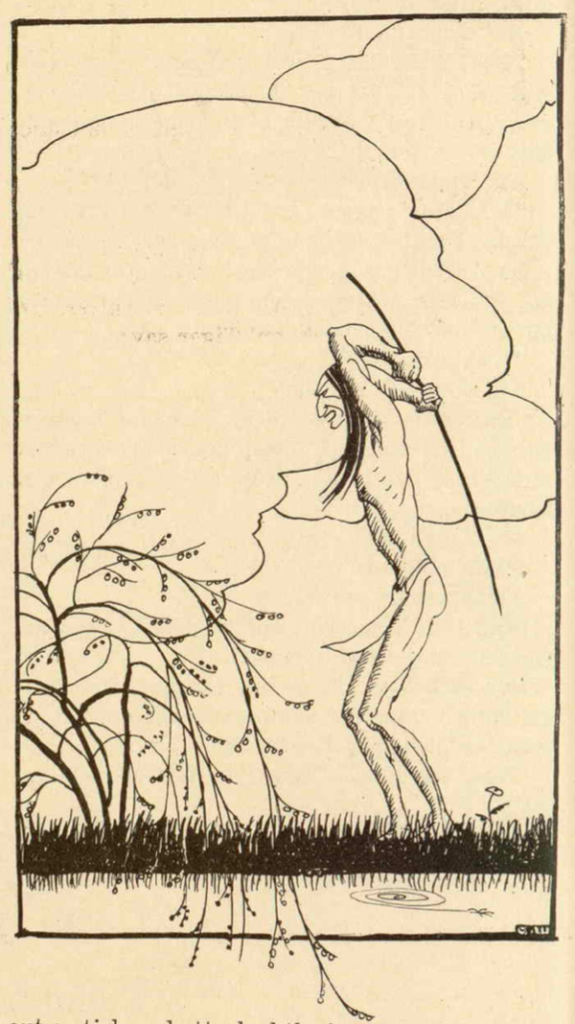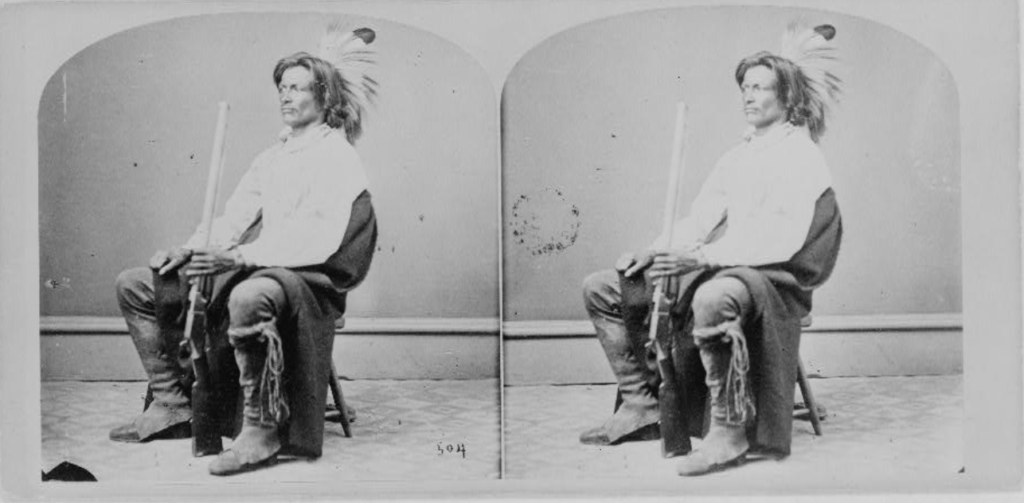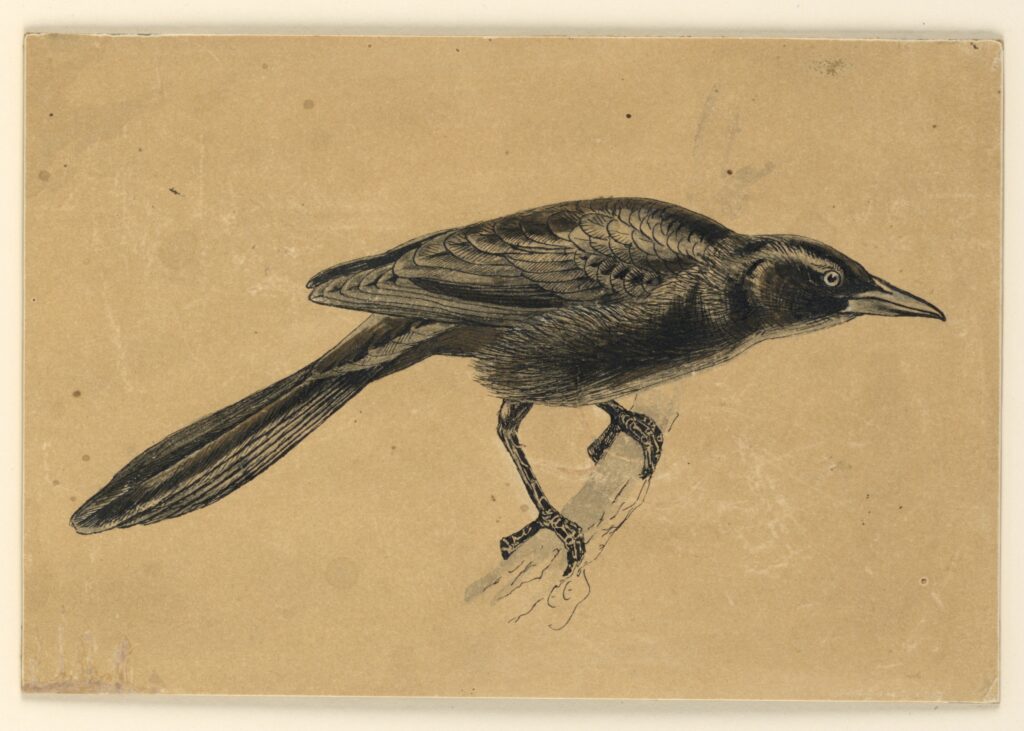Old Man and the Bullberries
By Grey Wolf
Annotations by Catherine Bowlin

W. E. B. Du Bois, ed., The Brownies’ Book, www.loc.gov/item/22001351/.
OLD MAN was walking along, very thirsty, so the first river he came to, he flung himself down to drink. Right after he had filled up, he noticed a branch full of bullberries [1], lying under the water.
“Say, that is fine,” exclaimed Old Man. “Berries! I guess I’ll dive in and get ‘em.”
He dived in, swam around under water, and felt for the berries; but not one could he find.
“That’s queer!” he gasped, coming to the surface. “I’ll look again.”
When the water cleared, he stared into it again. Sure enough, there were the berries.
Old Man dived a second time, and the poor fellow nearly suffocated, trying to stay under water long enough to find the berries. Finally he came up and blew a long breath and climbed out on the bank. After a minute, he turned to look and the berries were there as before!
“I don’t stay under long enough, that’s the trouble!” exclaimed Old Man. He found a stone and tied it around his middle and jumped in. He went down, like a stone, and flopped on the hard bottom of the river. Once there, he thrashed his arms about, looking for the berries. It was no use. At last, choking and bubbling, he tried to rise, but could not. The stone held him down.
“Do I die now?” he wondered.
“No,” answered his tomahawk,––“cut the cord!”
Old Man cut the cord, and the rock fell on his toes.
“OUCH!” he gurgled.
He shot to the surface. Now he was so exhausted that he had to lie on his back to recover breath. Suddenly he noticed, right above him a berry bush, leaning out over the river. It was the reflection of this bush that Old Man had dived for!
“So!” cried the Old Man to the berry bush, “you fooled me, did you!” He jumped up and picked out a stick and attacked the berry bush, beating it until he had knocked all of its berries.
“There!” he cried, as he ate the berries, “that is your punishment for fooling Old Man. After this, even the women will beat you!”
It was so. From that time, whenever the Indian women wanted berries, they beat the bullberry bushes with sticks, having first spread blankets to catch the berries. Old Man taught them that.

Grey Wolf. “Old Man and the Bullberries.” The Brownies’ Book, ed. W. E. B. Du Bois, vol. 1, no. 3, New York, N.Y.: DuBois and Dill, March 1920. 80. Retrieved from the Library of Congress, <www.loc.gov/item/22001351/>.
[1] Bullberries, also known as Buffalo berries, are shrubs found in the Great Plains and in more northern parts of Ho-Chunk territory.
Contexts
As is usual with Native American folk tales, not much is known about the origin of this story or the author. It is possible that Grey Wolf may be Gray Wolf, Chief of Winnebagoes, though there is not much known about Chief Gray Wolf either. The Winnebago Tribe, also known as the Ho-Chunks, lived in what is now central Minnesota and northern Illinois, and now the Tribe lives in Nebraska.
There is at least one contemporary children’s story related to Native characters and berries. Paul Goble’s Iktomi and the Berries: A Plains Indian Story, published in 1989, tells the story of a Trickster figure, Iktomi, who repeatedly dives for buffalo berries in the water.
Resources for Further Study
- Alexander, Hartley Burr. Native American Mythology. Dover Publications: Mineola, New York, 2005. (Link to Google Book)
- Bastian, Dawn E. and Judy K. Mitchell. Handbook of Native American Mythology. ABC-Clio, 2004. (Link to Google Book)
- Gill, Sam D. and Irene F. Sullivan. Dictionary of Native American Myths. Oxford University Press, 1994. (Link to eBook)

